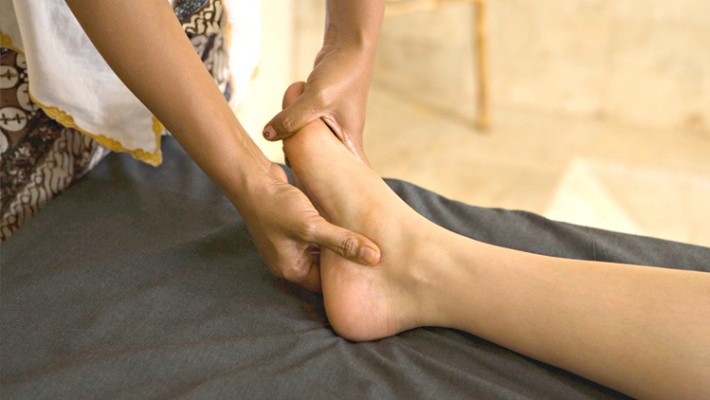
Do You Need Podiatric Care?
Most people suffer from some kind of foot disorder — from athlete’s foot or ingrown nails to bunions, hammertoes, or corns. Tight-fitting or high-heeled shoes are often the culprit, but heredity, poor foot care, injuries, or medical conditions can also cause problems. Whatever the state of your feet, your podiatrist can treat your problem to restore your comfort and ease of movement.
What is a Podiatrist?
A podiatrist, Doctor of Podiatric Medicine (DPM), is the only health care professional whose total training focuses on the foot, ankle and related body systems. As a specialist in foot care, the podiatrist receives extensive training in the diagnosis, treatment, and prevention of foot and ankle disorders by medical and surgical means. After obtaining an undergraduate degree, the podiatric doctor spends four years in a college of podiatric medicine to obtain a doctorate degree. Many podiatrists further their education by participating in a post-graduate university. Following their doctorate degree, each podiatrist must pass national and state examinations in order to be licensed by the state in which he or she will practice.
General Foot Care Tips
- Wash your feet daily. Rinse off all soap and dry thoroughly, especially between toes.
- Trim nails and straight across, and not too short. Do not cut or dig at corners.
- Wear clean socks or stockings, changed daily. Do not wear any that are too short or too tight.
- Wear shoes that fit.
Finding the Right Shoes For You
The wrong shoes can cause or aggravate ailments. The right shoes can often prevent, but cannot correct problems. So, wearing the right shoes is vital to foot health. Follow this checklist when you buy shoes. Be sure they measure up.
Construction
- Leather is best because it breathes like skin and molds to your foot. But cheaper canvas is fine and fast-growing for children.
- Soles should be strong and flexible with a good gripping surface.
- Insoles should be cushioned to absortb the jolts of walking on hard surfaces.
- Arch supports distribute weight over a wider area. Rigid inner soles also give added support.
- High heels are fun and look good, but they should not be worn too long at a time or for much walking. Besides cramping the toes, they change body posture, making back arches more likely.
Fit
- Only you can tell if shoes fit. If they are not comfortable, do not buy them!
- Do not plan on shoes stretching with wear. If you already own shoes that are too tight, ask your shoe repair shop if they can be stretched.
- Because feet spread with age, have your feet measured every time you buy shoes. Both feet should be measured as they are often different sizes. Always buy shoes for the BIGGEST foot.
- Go shoe shopping late in the afternoon. Feet swell to their largest then.
- Size depends on shoe make and style, too. Do not insist you always wear one size if the next size feels better.
- The toe box should be roomy enough so you can wiggle all your toes.
- Your forefoot should NOT be wider than your shoe.
- If you cannot find shoes that fit, ask your foot doctor for advice.
What are Orthotics?
Orthotics (commonly called “Arch Supports”) can be used for a variety of foot problems. Some runners might Over-Pronate”. Pronation (commonly called “Flat-Feet”) is normal. I have had runners come to my office saying they “pronate”. How can this be cured? I don’t cure it. When your heel hits the ground the foot is supposed to pronate. By the time the whole foot is on the ground the foot starts to Supinate (commonly called “High-Arched”). The problem is when the foot still remains pronated (flat-footed) at this time. This is known as “Over-Pronation”. This is when problems can arise. Over-Pronation is not good. In the average person, it may not result in any problem. Because runners apply 3x the normal forces to their feet this problem is amplified. In some people, orthotics are needed to stabilize their feet to prevent over-pronation. It is important to make sure your running shoes have not bent out of shape in an over-pronated position. This could prevent the orthotics from functioning properly.
I also prescribe orthotics to patients who are not runners. Someone with heel or arch pain. After a course of physical therapy & local injections of cortisone, orthotics are prescribed to relax a tight plantar fascia (a strong tissue that connects from the heel to the toes).
